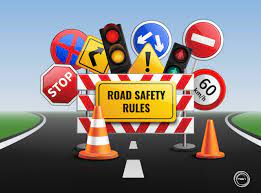
Defensive driving is the act of drivers who reduce the risks associated with driving. By driving steadily and smoothly, defensive driving techniques can reduce the risk of an accident or incident. They can also save money on vehicle maintenance and fuel.
To drive defensively, you must be aware of the potential hazards around you and how other road users are acting. This will allow you to take proactive measures to avoid an accident. Look 15 seconds ahead to give yourself enough time to react. Always scan your mirrors, and keep an eye out for vehicles in front. This will allow you to see potential hazards before they become too late.
Do not rely on others to make the right decisions. Allow yourself and other drivers plenty of space and time. Keep a distance of three seconds when you are following another vehicle. Do not tailgate another vehicle. This will reduce the time you have to react to sudden changes and will put you and others at risk.
Many collisions are avoidable. Imagine a situation where your vehicle runs into the back of another vehicle. This could have been prevented if you had left more room between you and the car in front. You could have avoided the vehicle by using defensive driving techniques.
Signaling early and clearly is important for drivers to understand your intentions. Only change lanes if it is safe. Be mindful of hazards ahead that might include speed reductions or closed lanes due to highway maintenance. For more information on the importance of Chapter 8 chevrons for safety, visit a site like www.pvluk.com/chapter-8-chevrons/
There are many defensive driving courses. However, the most effective way to learn this driving style is by being proactive and staying focused at all times.
Be aware of what is around you. Where there are more road signs, painted road markings, or streetlights it usually means that there are greater dangers to you and others around you.
Driving safety tips
- Stay up-to-date with the rules and laws of the road
- You should not drive when you feel tired, emotional or angry
- Keep a distance of three seconds when following another vehicle
- Signal early and clearly to other road users your intentions
- Avoid distractions like mobile phones and food
- Avoid unnecessary lane changes
- Make sure you allow plenty of time for your trip
- Adapt driving to the road conditions and weather.

